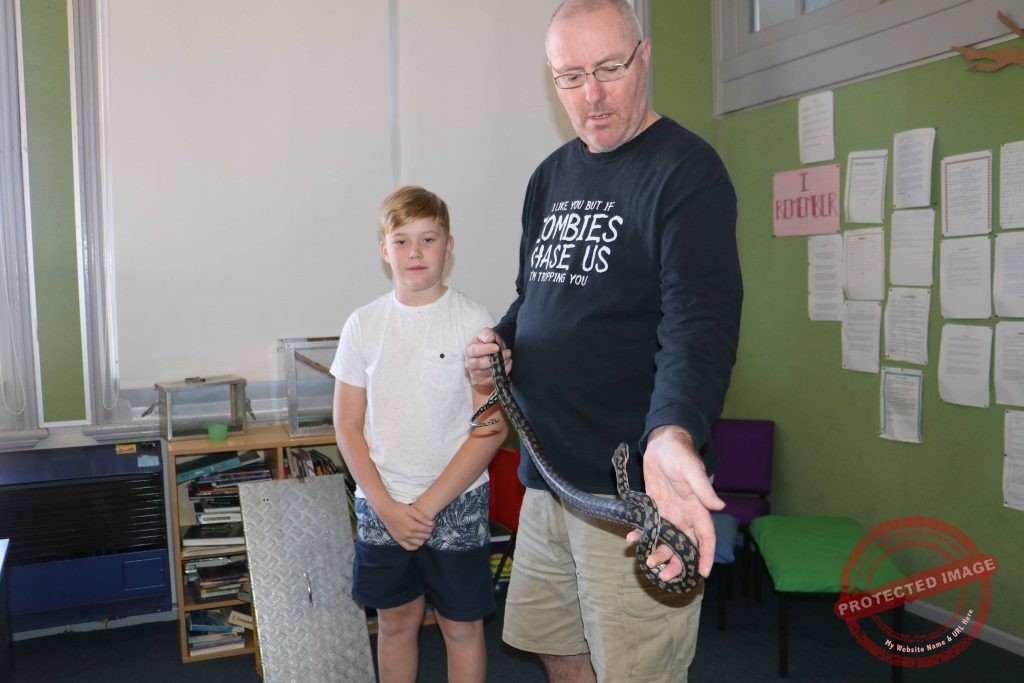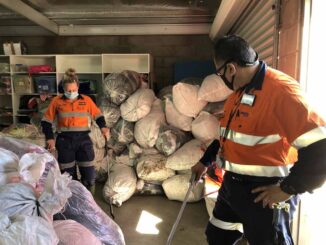
An abundant summer season that brought good rain has also led to an abundant season of snakes in Cobar.
A number of locals have reported seeing more snakes than ever over the past few weeks with local accredited snake handler Jonathan Harvey saying that’s not surprising due to the increase of rodents such as mice and native kultarrs around.
“The normal house mouse population has skyrocketed and wherever there is that amount of food source, it will support a larger amount of snake life,” Mr Harvey said.
“Normally when the seasons are leaner, the snakes will go further out into the bush looking for food where now almost every house in town is carrying a rodent population that they don’t normally carry.”
A number of snakes, including the second most dangerous land snake, the eastern brown snake, can be found in the Cobar area.
“They are big snakes and can get up to about two to two and a half metres.
“Around Cobar we have the yellow faced whip, it grows up to about 1.2 metres, and the diameter of your little finger and is commonly mistaken for a brown snake because of the look of them,” Mr Harvey said.
There’s also the inland carpet python, the southern death adder, the bandy bandy snake, the king brown (or mulga snake) and western brown snakes.
“The western will only grow from 1.5 to 1.8 metres, it’s a smaller snake with smaller fangs, and venom wise, it’s not as dangerous.
“They deliver a lot but it’s not as toxic as the eastern, the eastern is the top of the chain and then the king brown or the mulga snake,” Mr Harvey explained.
Besides trying to keep the rodent population under control at your homes, Mr Harvey recommends doing a check around your yard to ensure you are not providing a cool dark spot for snakes to hide. He said to be wary of areas like under wheelie bins, wood heaps and anywhere they might feel protected and covered.
Mr Harvey said the good news is snakes will soon be not as prevalent.
“The weather is changing and the nights are getting cooler.”
“By the end of April it should be a rare sight to see one,” Mr Harvey said.
When confronted with a snake Mr Harvey recommends staying away from them.
“Stay out of the way, don’t approach. Leave an exit for them to get away and call WIRES (Wildlife Information, Rescue and Education Service).”
Mr Harvey is one of two WIRES accredited snake handlers in Cobar.
“We never advocate people using a stick or a shovel or whatever, you might miss, fall or slip. Just leave it alone and wait for it to move away. It’s a crime to kill them,” he said.
NSW Ambulance recommends the following precautions be taken to reduce the risk of snake bite.
If you come across a snake, leave it alone and walk away. A snake will usually not bite unless it feels threatened.
Never touch or attempt to catch snakes.
Wear sensible, closed-in footwear when in high-risk areas.
Be very vigilant and watch where you are walking when in areas that snakes may inhabit.
When bushwalking remain on clearly defined designated tracks.
Mr Harvey said if you are bitten by a snake, it’s important to try and stay calm and not move too much.
“Use your phone. You’ve got 24 hours or so, if you have applied a good pressure bandage and you have remained calm and are not pushing the venom through your system, then you have a good 24 to 36 hours to get medical help.”
He said in about four out of 10 snake bite cases antivenin is not administered.
“If you are bitten, never wipe or wash down the skin because it’s from that venom on the skin that they will know what type of antivenin to give.”
A local man, Chris Freeman, was recently hospitalized in Dubbo for a suspected snake bite.
“Even though I had what resembled a painful bleeding snake bite on my lower leg and was flown out to Dubbo, none of the tests came back positive to venom,” Mr Freeman said.
He said while he didn’t see a snake or feel a bite, the mark had all the signs of being a snake bite.
Mr Harvey said some snakes can do nips or dry bites without releasing venom as a warning.


